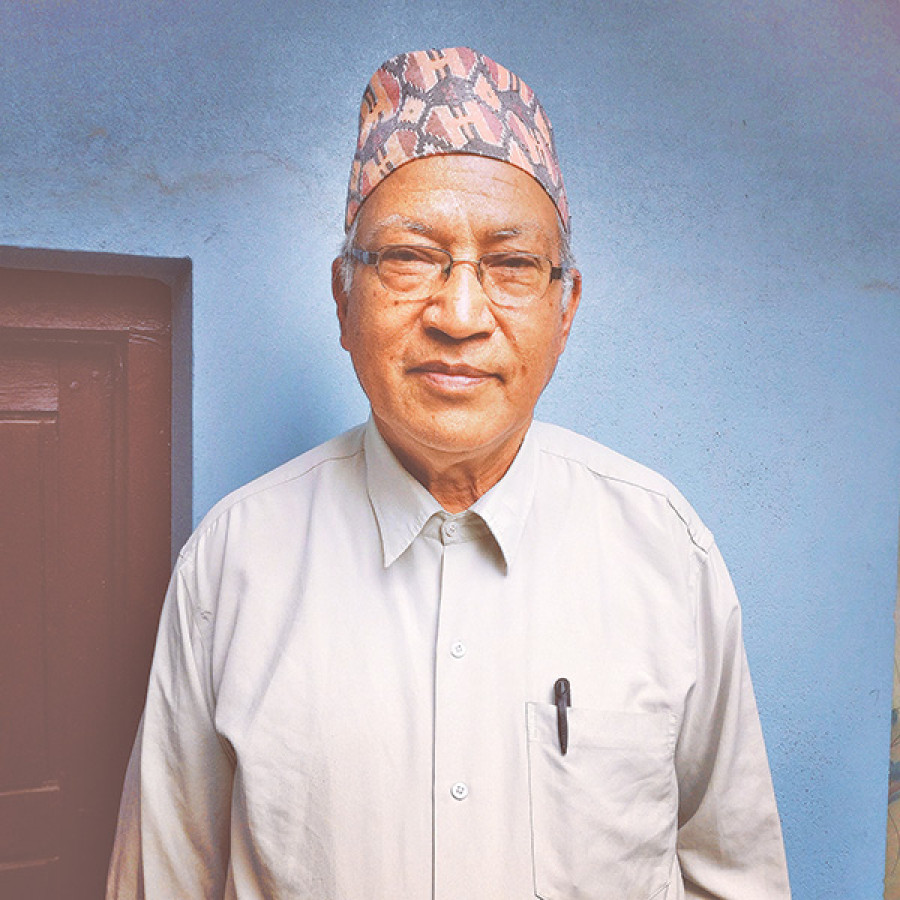Miscellaneous
The art of unearthing
When you ask around, you learn that Kashinath Tamot is a 73-year-old epigraphist, researcher, writer and translator, who works out of passion and not for publicity. Upon meeting him, you will learn that Tamot, one of Nepal’s leading scholars, is also a tech savvy man who believes in staying abreast with the fast-evolving world.
When you ask around, you learn that Kashinath Tamot is a 73-year-old epigraphist, researcher, writer and translator, who works out of passion and not for publicity. Upon meeting him, you will learn that Tamot, one of Nepal’s leading scholars, is also a tech savvy man who believes in staying abreast with the fast-evolving world. He says he is not acquainted with the computer, but he will happily show you the samples of his work and records of new and old discoveries on his smartphone. In this conversation with The Post’s Abha Dhital, Tamot talks about his passion for digging out untold stories and discovering writers unknown. Excerpts:
You are a lover of knowledge. Did this run in the family?
No, I wouldn’t say that. I was born and raised in Bhojpur. My parents didn’t really care whether I went to school or not. I wasn’t sent to school till I was 10 years old.
I, on the other hand, have always been very curious. No matter where I go, no matter where I am, as soon as something intrigues me, I have to know about it. I cannot just tie my hands down and pretend like it doesn’t matter to me.
Is that why you chose to become a researcher? How did you start your career?
I didn’t know I wanted to get into the field. Once I completed my tenth grade in Bhojpur, I came to Kathmandu to pursue a diploma in Civil Engineering; it used to be referred to as an ‘overshare’ course and was in trend among ‘good’ students. By the time I graduated Overshare, I had already realised that being a self-taught student and homeschooling made more sense than enrolling into an institution. So, I started pursuing IA (Intermediate of Arts) on my own. It was around this time that I was introduced to Nepali literature.
When I got hold of Kamal Mani Dixit’s Buigal, a compilation of poems by renowned writers from all over Nepal, I noticed that there was no mention of two particularly good writers from my village—Bhojpur. This was followed by the realisation that there could be so many writers who will never be known to the world simply because their calibre isn’t fully appreciated and they haven’t broken into the mainstream literary arena yet. This inspired me to go back to Bhojpur and dig out stories about not just people but also places. I never looked back. That’s how my journey started. I wouldn’t call it my career, because research is not all that defines me.
That’s true. Research is not all that defines you, but before we move on, could you tell us a little about your contribution to Isabella Tree’s The Living Goddess?
In 2003, Isabella came to me to help her with a research. She wanted to write a novel on the Kumari, the living goddess. We thought it would only take us half a year, or a year at the most, to assemble the facts and figures. But research is so much more than just delivering what is considered to be factual. It is about bringing light to things that haven’t been discovered yet. Reproducing existing facts has so little value when compared to unearthing bizarre, new evidences that redefine history altogether.
As I dug deeper about Kumari’s religious history, both Isabella and I realised that the subject is so rich and we wouldn’t be doing justice to it with mere six months’ work. So the time frame was extended and the purpose of the book changed. After nine-year’s worth of mostly new findings accompanied by translations, transcriptions and notes, the book became an amazing religious, historical travel literature.
For this book, I examined various unrecorded texts and inscriptions and translated them to Nepali and English from Sanskrit and Nepal Bhasa. Hence, the research eventually helped in my own report and article publications.
Talking of texts and inscriptions, you showed me your hyper organised collection of 1,600 colophons in your Google drive. Why are they so important?
You see, the period from ninth to twelfth century is known as the ‘Dark Age’. There is so little information about this transitional period. When it comes to Nepal’s history, there are not more than seven inscriptions that work as a window to that period. The colophons—a publisher’s emblem or imprint, usually on the title page of a book—found on the texts from that period have played an important role in writing the history of Nepal. You can examine, elaborate, and translate each of these colophons to uncover history.
Do you think the younger generation is as concerned about inscriptions, history and language as much as they should be?
Well, when it comes to ancient texts and inscriptions, most people from any generation couldn’t care less. The problem with us Nepalis is that we let our historical assets either decay in an unattended corner or disappear first, then in order to compensate we try to reproduce them and do so without considering the fact that the new asset doesn’t carry the same value or the essence. But, when a foreigner understands the value of the same abandoned asset, we become all protective towards it. Another very bizarre thing we tend to do shamelessly is that when we fail to comprehend the value of an ancient text or monument, or when we have zero knowledge about something that looks fairly important from the historic point of view, we attach a random religious significance to it and start worshipping it with no questions asked. That’s just being plain lazy.
When it comes to language, we can’t really complain. Languages evolve and disappear all the time. It is the law of the universe. However, we can work towards longevity—the younger generation can work towards preserving it in the best way possible.
I don’t know any 73-year-old who blogs as actively as you do. How strongly do you believe in keeping up with the younger generation?
While I do believe that the younger generation should be careful of the herd mentality, it is important for me to keep up with them. And it is also very important to use the resources at my disposal. I can’t use the computer but I have an assistant who helps me update my blog as frequently as possible. I can write in three languages—Nepal Bhasa, Nepali, and English—and if with technology I can share my knowledge with a larger audience, I might as well embrace it.
You are a very outspoken man; people often say when you feel something is wrong you won’t comply with it. What is the one slightly deviant thing that you are advocating which even the younger generation seems to be conservative about?
Well, people don’t like it but I actively advocate for the Common Era. Because almost all calendars have already evolved to be erroneous at one level or another, I don’t get the big fuss about which calendar to follow.




 9.12°C Kathmandu
9.12°C Kathmandu









